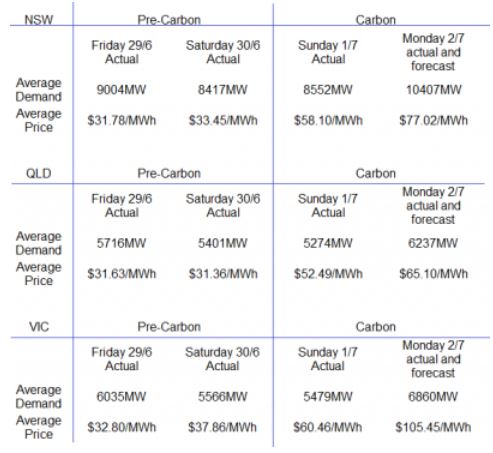The July New English Review is online.
A couple of highlights:
Geoffrey St John on why a nuclear Iran is a risk Israel cannot take.
The argument that Iran is justified in seeking nuclear weapons because it cannot trust the US or Israel seems to me to be utterly bizarre. The US has profited not one iota from its costly and painful interventions in Kuwait, Somalia, Iraq and Afghanistan. It has tried to build peaceful stable societies, and has largely failed, because it is not possible to build a peaceful democratic society where people do not want a peaceful democratic society.
Israel has a history of responding successfully to attacks on its borders and people. It has no history of attempts to enlarge its borders, or of unprovoked attacks on anyone. As St John points out, that is not true of Iran, which already supplies weapons to Hezbollah and Hamas.
And contrasting but equally insightful articles by Theodore Dalrymple on Haydn and the relationship between talent and its fruits, and character:
The difference between the significance of the work and conduct is likely to increase with time, at least if the work survives the death of its author. If it were to be shown conclusively from impeccable sources that Shakespeare had been a villain all his life, it would hardly affect our estimation of his work at all. A man can be a sublime artist but an unattractive figure, and in the long run it is the former that counts.
And Mark Anthony Signorelli on the continuing impact of TS Eliot:
One of the most admirable causes taken up by Mr. Scruton over the years has been his crusade against the hideousness of modern architecture. In much of his work on this topic, he has argued persuasively that the totalitarian impulse which has deformed so much of modern politics manifests itself as well in the overbearing concrete structures of modernist architecture. That is to say, Mr. Scruton has recognized that in the case of modernist architecture, style is not philosophically neutral, but rather embodies a certain perspective and way of approaching the world. ..
This is also true of literature and music; character affects the work so deeply (how could it not!) that the work necessarily marks the reader, listener, watcher with that same character.
Matthew Walter’s review of Lucas’s Style, the Art of Writing Well makes the same point:
Lucas admiringly quotes Anatole France’s recipe for good style (“First, clarity; then again clarity; and, finally, clarity”), but it is not one that he endorses. Character, according to Lucas, is the true “foundation of style.” Why did Lancelot Andrewes, Dr. Johnson, and Jane Austen write better prose than, say, John Donne, Jonathan Swift, and George Meredith—consistently? Simply put, to their rivals and contemporaries, they were morally superior.
Here I think Lucas is correct. Certainly Lucas’s style—vigorous, free of cant, occasionally playful but never frivolous—seems to owe a great deal to his own admirable character.
I doubt whether Jane Austen was really morally superior to Jonathan Swift. She was inclined to a kind of smug judgementalism, as this excerpt from a letter to her sister Cassandra demonstrates:
I am proud to say that I have a very good eye at an adulteress, for though repeatedly assured that another in the same party was the She, I fixed upon the right one from the first. A resemblance to Mrs. L. was my guide. She is not so pretty as I expected; her face has the same defect of baldness as her sisters, and her features not so handsome; she was highly rouged, and looked rather quietly and contentedly silly than anything else.
But whether Swift or Austen was the more honourable, the purposes of art are truth and beauty. The expression of those things depends on the ability to identify them, and that ability depends on the artist’s depth of character; his commitment to truthfulness in all things.
The works of an artist who is also a liar, whether in commercial dealings, his relationships with women, or his politics, may be convenient for a time, but can never have lasting value.
The trouble is, we have all failed. We all fall short. This does not mean that none of our works have value. It does mean that if we want to better artists, we must first try to be better people.



